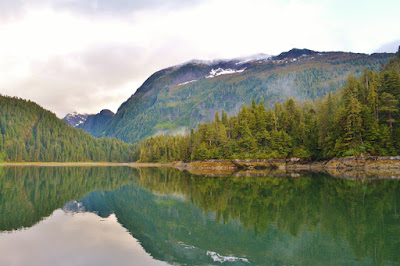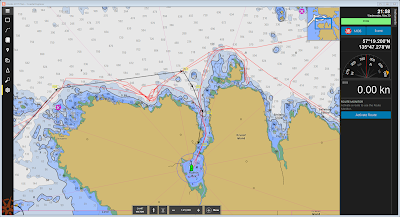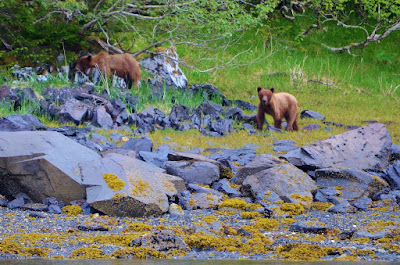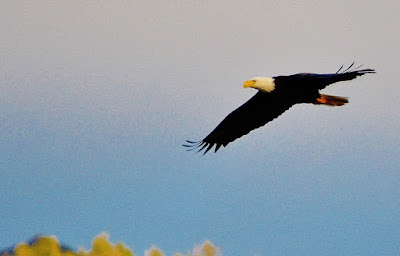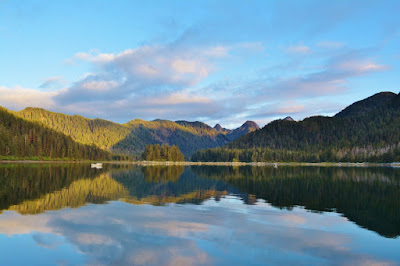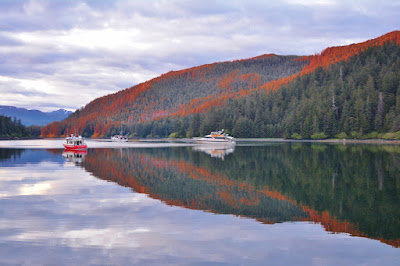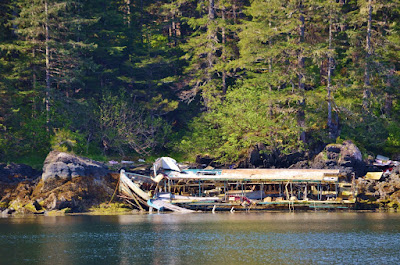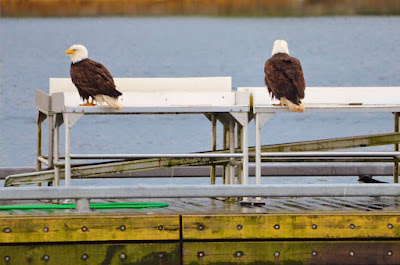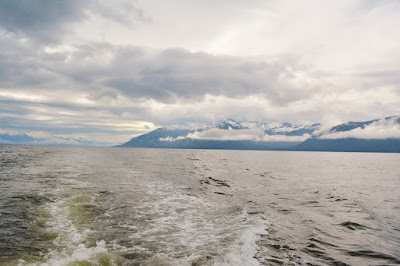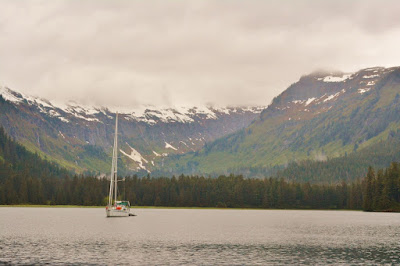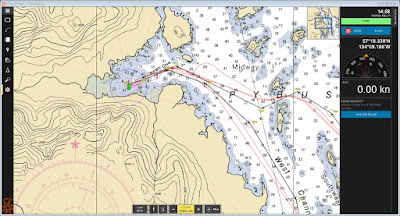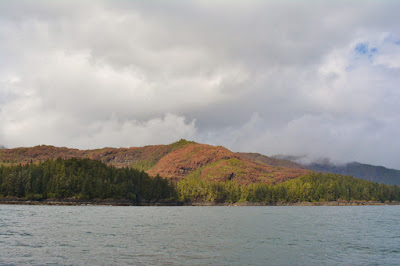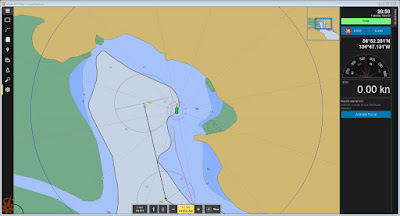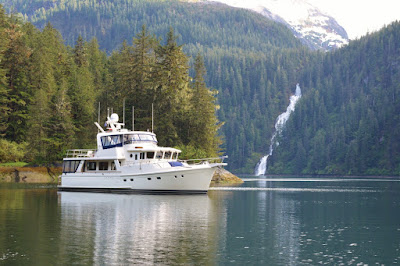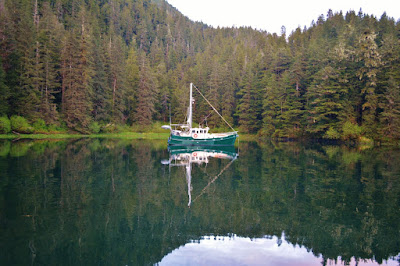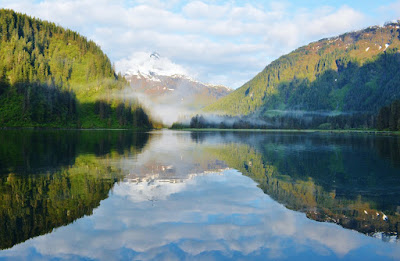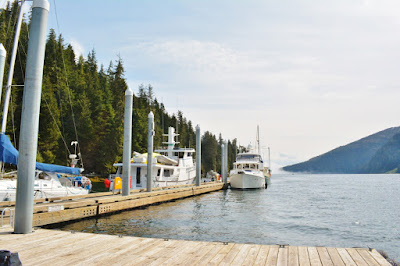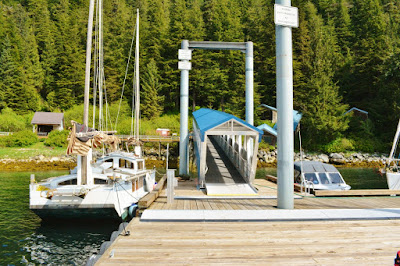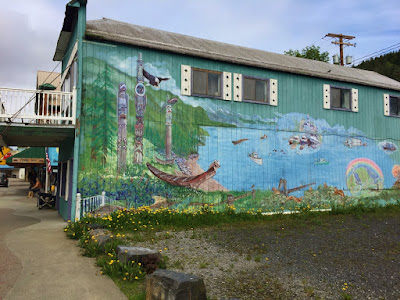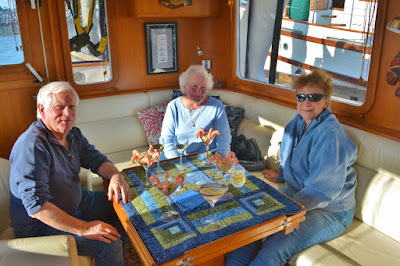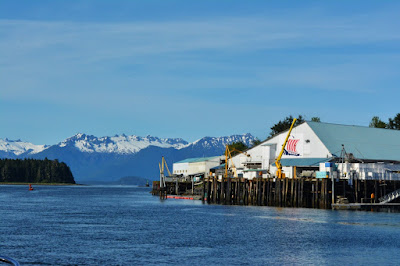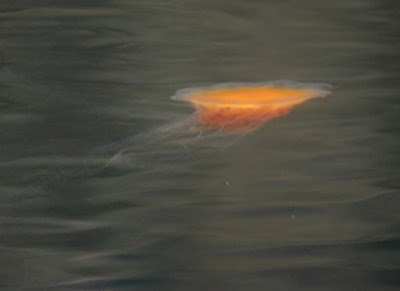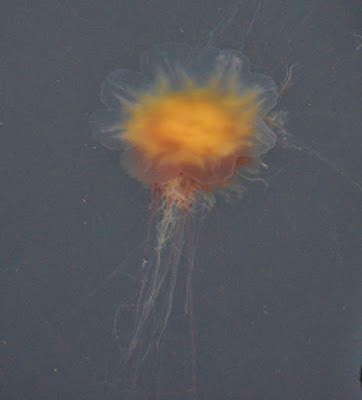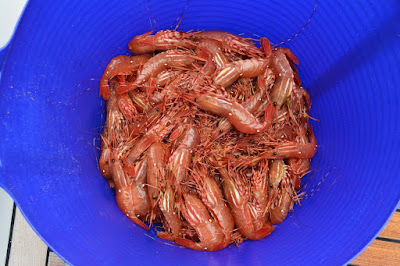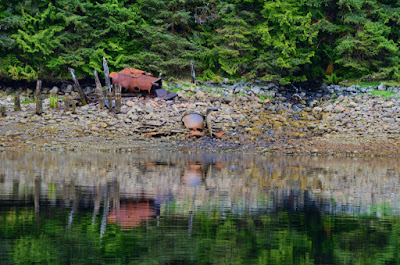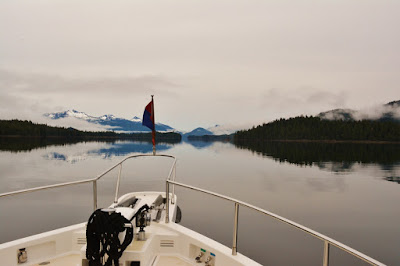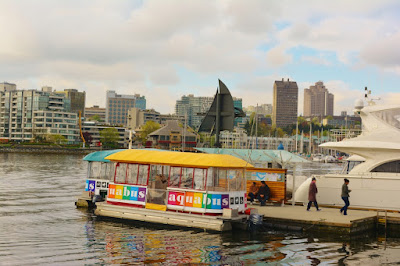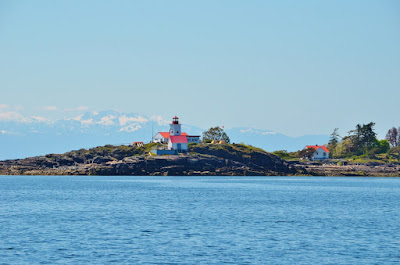May 4, 2018
Our alarm was set for 0500 for a 0535 departure from North Island Marina, not even fully light. The winds were calm with light rain, which persisted until noon. We set a course across Neill Ledge, through a 40 feet deep gap between the kelp patches and headed for Pulteney Point. From Pulteney Point we headed for Gordon Channel, boosted by a modest ebb current.
Reaching Davey Rock, the seas were so smooth we took a shortcut through Bolivar Passage and behind Storm Islands to shave a few miles from our traditional route around Pine Island.
As Spirit approached Cape Caution we encountered a low westerly swell, perhaps 1 meter. Cape Caution was abeam at 1035, just five hours after leaving Port McNeill. Turning towards Egg Island, the swells moved to our beam and then our port quarter as Calvert Island began to protect us.
Cape Calvert was abeam at 1240 PM as we headed in glassy smooth water up Fitz Hugh Sound to Kwakshua Channel and the entrance to Pruth Bay on Calvert Island, our anchorage destination for the evening. We knew it was early in the season since the top of Calvert Island was still covered in snow.
 |
| Kwakshua Channel |
Spirit was the only vessel anchored in front of the Hakai Beach Institute, so we were closer than we have ever been to the lodge. After some tries, we were able to get logged on to the guest wireless internet, where you are allowed 300 Mb per day of free service, even though there is no cell phone service.
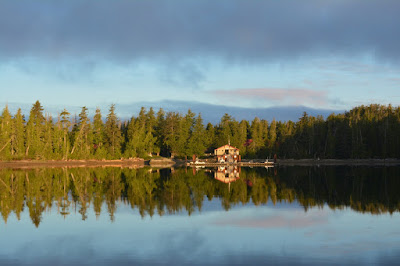 |
| Hakaii Beach Institute in the AM |
May 5, 2018
After a leisurely breakfast of avocado toast with soft poached eggs, we pulled the anchor from the sand bottom of Pruth Bay at 0640 and headed up the relatively narrow channel between Hecate and Rattenbury Islands, across Hakai Pass and into Ward Channel. The transit of Ward Channel takes only about 10 minutes and we exited into Nalau Passage. By 0810 we had re-entered Fitz Hugh Sound, under clear skies and a 10 knot north wind. Looking back down Fitz Hugh Sound we could see the dense fog bank still covering Cape Caution.
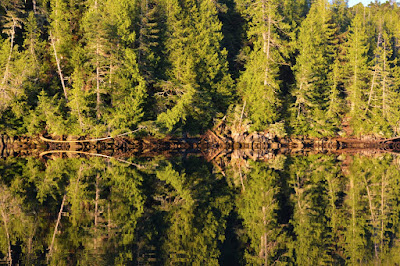 |
| Morning reflections in Pruth Bay |
Spirit was running against an ebb current, which slowed us down by 1.5 knots until we turned into Lama Passage at 1015. When we could see Bella Bella, we regained cell phone coverage which lasted as we passed Dryad Point and headed down Seaforth Channel to Ivory Island Light at 1315. Heading out into Milbanke Sound, coverage disappeared.
The exposure to the low westerly swell of 3-4 feet, mostly on the beam, only lasted for a little more than 1 hour, until we turned into Finlayson Channel at 1410.
Approaching Klemtu, we once again had cell phone coverage all the way up Finlayson Channel until we turned into Bottleneck Inlet at 1630. The entrance to Bottleneck is shallow and narrow, but we entered near high tide and showed a minimum depth over the entrance bar of 22 feet, which correlates well to the chart datum of 9 feet at lowest tides.
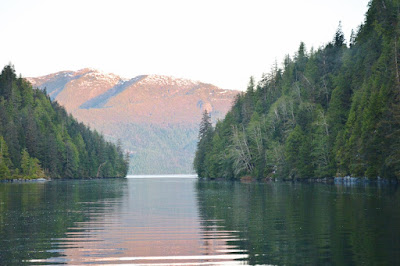 |
| View from Bottleneck Inlet |
By 1644 the anchor was down in 32 feet of water. The 7-10 knot winds through the entrance kept us lined up with the entrance. Just as in Pruth Bay, we were the only vessel anchored. Today Spirit logged an additional 82 nautical miles.
We dined on a marinated pork tenderloin accompanied by a rustic hash of baby potatoes, onions, peppers and fresh rosemary, with a green salad garnished with avocados. We are only three days from Ketchikan and US Customs, so need to eat the fresh food not allowed across the border.
As the sun set, the wind died completely, and we floated aimlessly around the anchor as we enjoyed some cooking shows on the satellite TV, still working even in the narrow and steep sided inlet.
May 6, 2018
Our departure from Bottleneck Inlet was at 0600, to take advantage of a high tide through the entrance and to minimize the adverse current Hiekish Narrows, 8 miles further up the channel.
The weather was settled, with clear skies, and minimal winds at first. Aside from the BC Ferry Northern Adventure, which passed us shortly after exiting the narrows, Princess Royal Channel was deserted. The ebb current ranged up to 2 knots against us and there were periodic bands of wind and chop. Slowing down for photos of Butedale, which disintegrates more every year, we looked at the dock which appears to be in better shape than previous trips. The place looked deserted, not even any smoke from the caretaker’s house, nor any call on the radio inviting us to stop.
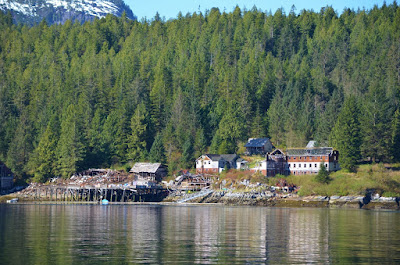 |
| Butedale 2018 |
 |
| Our only company in Princess Royal Channel |
The wind picked up to 20-25 knots at the top of Princess Royal Channel, with 3 foot seas to match, which persisted until we entered Grenville Channel “the ditch”, which stretches nearly straight for 50 miles.
Our anchorage for the evening is Lowe Inlet, just 15 miles up the Grenville Channel, just before the narrow portion, only 1/4 mile wide. Lowe Inlet is a marine park and we usually anchor in Nettle Basin, which is mostly 80-100 feet deep, right in front of Verney Falls. The flow from the falls keeps the boat aligned with the current rather than swinging all night. That was the plan, but the National Geographic Quest was anchored in Nettle Basin. We negotiated an anchorage location and one hour later the Quest left us alone except for “Yachette”. With sunny weather and 70 degree temperatures it was a pleasant evening in Lowe Basin.
 |
| Spirit in Lowe Inlet |
May 7, 2018
The anchor was pulled up at 0546 as both Spirit and Yachette left Nettle Basin to take advantage of the last of the of the northbound flood tide in the narrow portion of Grenville Channel. The ebb currents can reach 4 knots quickly, really extending the time in Grenville.
We were called by VTS as we proceeded north, warning us about a boat hard aground on the west side of the channel north of Morning Reef. Sure enough, a 25-30 foot aluminum boat had the bow up in the trees. VTS requested we slow to no wake speed passing by to minimize further damage since the stern was still in the water.
 |
| Oops! |
The weather on Chatham Sound was initially good, then the afternoon westerlies started and the winds eventually gusted to 28 knots and a short, steep sea developed on our port quarter. As we passed Green Island, the seas flattened and when we turned in corner into Dixon Entrance at 1500, the wind had slackened to 15 knots, with the swell and wind chop on the port bow.
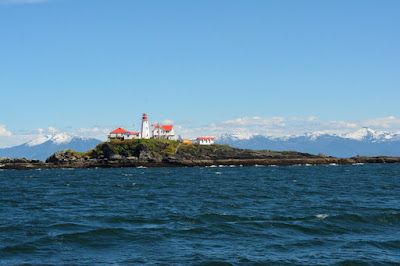 |
| Green Island Light just before Dixon Entrance |
We crossed into US waters at 1535. By the time we reached Tree Point the wind had fallen to 5 knots, the sea was flat except for a 2 foot low westerly swell. We were pleasantly surprised at near continuous cell phone coverage until we reached outer Foggy Bay. Threading our way though the channel, we joined two other boats as we anchored in Foggy Bay inner basin at 1800 PDT. Clocks were changed to Alaska Daylight time. We covered 104 nautical miles today for a total of 618 since leaving Anacortes.
As the sun finally went down, the wind died completely while at anchor in Foggy Bay and we called it a night early after 12 hours underway.
May 8, 2018
The winds remained calm overnight and we slept well at anchor. Nevertheless, at 0502 the anchor released from the sticky and stinky black mud in Foggy Bay and we reversed course out the narrow channel into Revillagigedo Channel and headed for Ketchikan. The weather gods were not done, we experienced wind, waves and opposing swells as we chased the remains of fog banks covering the channel. Past Twin Islands, the wind and seas calmed totally and we headed without further incident up Tongass Narrows.
After clearing US Customs, we refueled at Petromarine. Fuel prices were only slightly higher than in Anacortes. By 1015 we were tied up at Bar Harbor, our home for the next few days. We have travelled 655 nautical miles since Anacortes
